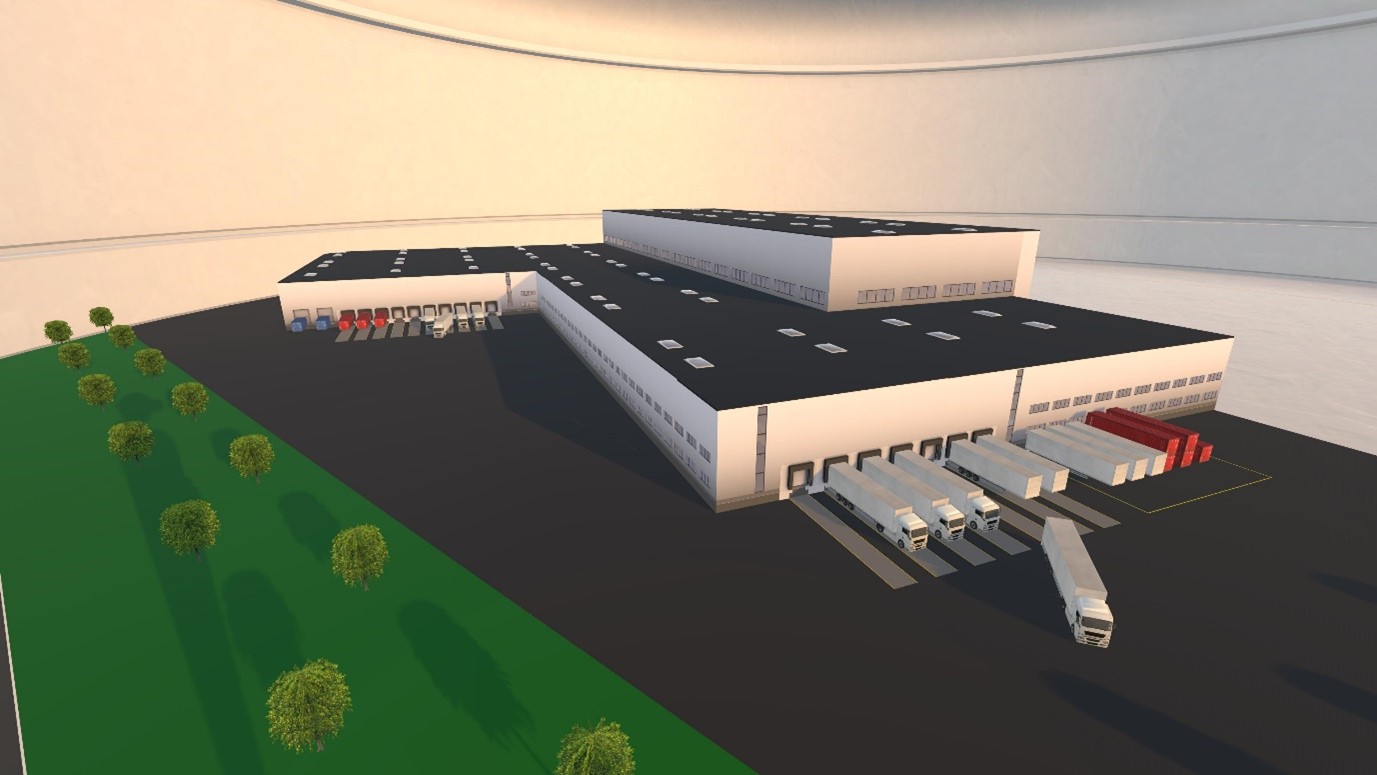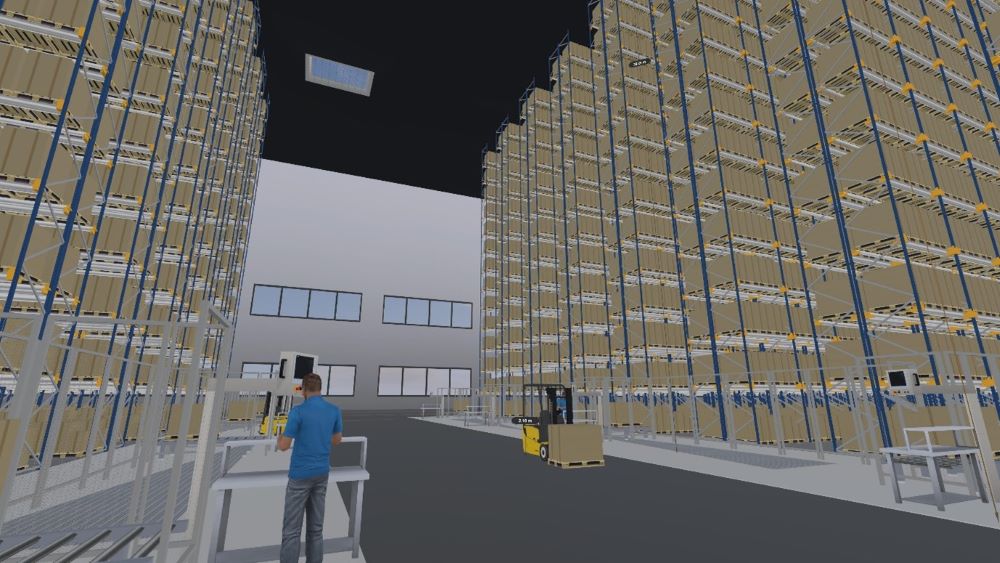As both competition and customer requirements grow steadily, businesses are faced with the challenge of optimizing their processes and infrastructure to remain competitive. This is particularly true for warehouses and factories, which are crucial hubs in the entire supply chain. Target-oriented site planning coordinated with all stakeholders is essential – not only to meet the defined strategy and requirements, but also to ensure planning and implementation costs stay within the project budget.
Virtual reality – a proven tool for efficient site planning
Traditional warehouse and factory planning can be time-consuming and cost intensive. Especially in the early project phases, from developing the strategy to detailing the concept, teams must make key decisions with a major impact on overall costs. Planning errors or inefficient design can therefore lead to significant delays, higher operating costs and dissatisfied customers and employees.
Experienced experts can provide support. Using virtual reality (VR) to build on classic planning, 4flow introduces new ways to overcome such challenges in the early project phases. Layout planning and visualization tools such as visTable® and PROSPECT Iris VR® let planning teams create virtual models of warehouses and factories in the concept phase. Planners and decision-makers can analyze and optimize the arrangement of conveyor technology, racks, automation technologies, workstations and other areas for material flow in a virtual environment before implementation. Using state-of-the-art planning tools, 4flow creates a holistic site plan tailored to each customer's requirements. Virtual tours of facilities in the planning stage allow teams to identify and address potential problems at an early stage. This not only reduces implementation costs, but also minimizes the risk of cost-intensive changes at a later stage.
Virtual reality provides an easy way to integrate stakeholders
There are many advantages of virtual reality for warehouse and factory planning. In virtual-reality workshops, all stakeholders can take true-to-scale tours in the VR model to visualize the concept. Participants can discuss questions directly or leave digital comments in the model to address later. This 360° planning approach with intensive stakeholder involvement creates an opportunity to incorporate different points of view, so all specific requirements are considered in the planning process.
Virtual reality provides additional benefits in change management. Future users of the site can be involved in planning and see the end vision for themselves. Layout planning and visualization tools such as visTable® and PROSPECT Iris VR® support the project team to encourage adoption early on with playful methods. Teams can also share detailed planning statuses for greater transparency. By virtually experiencing the new site for themselves, decision-makers and future users are involved in the process. This fun and innovative application of VR ultimately leads to a deeper understanding of the intended changes.


The virtual world: a cost-effective tool for warehouse and factory planning
Virtual reality offers an efficient and cost-effective way to expand traditional methods of warehouse and factory planning and optimization. In addition to improving resource utilization, VR enables teams to meet increasing customer demands throughout the planning process and sustainably boost customer satisfaction.
Interested in learning more?
Authors

Jan-Niklas Grafe
Principal
4flow consulting

Robert Roggenfeld
Manager
4flow consulting

Amelie Strunk
Senior Consultant
4flow consulting
